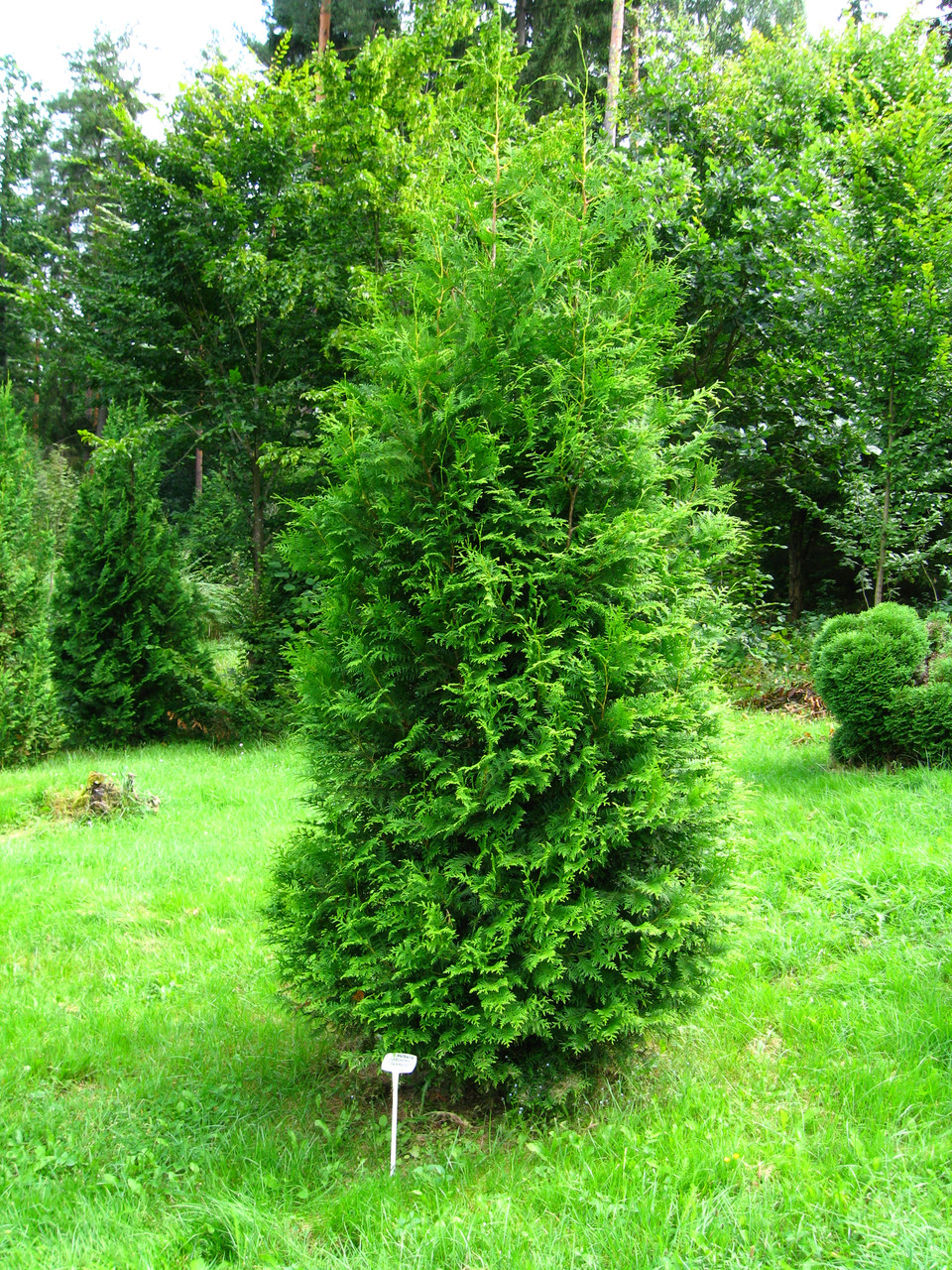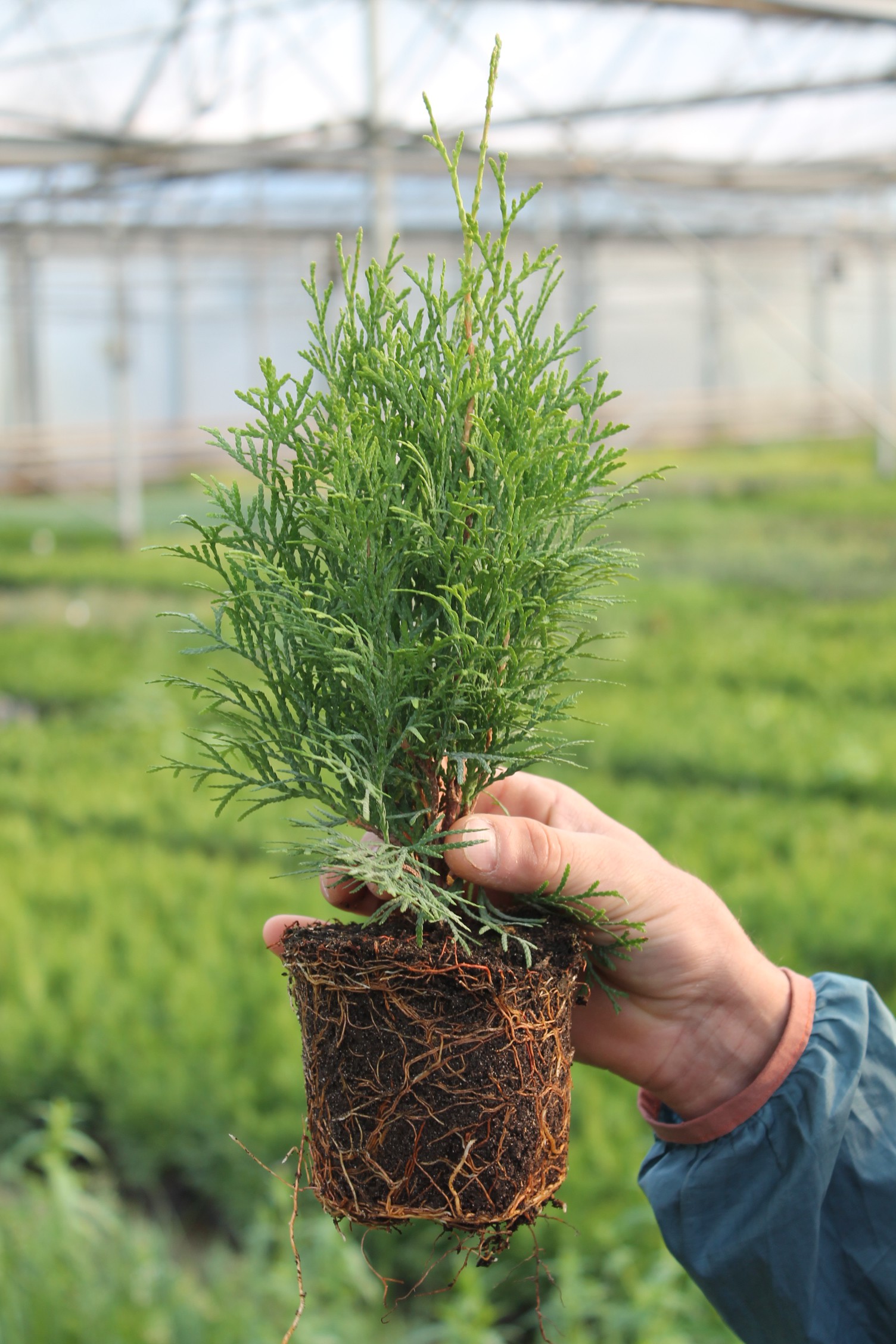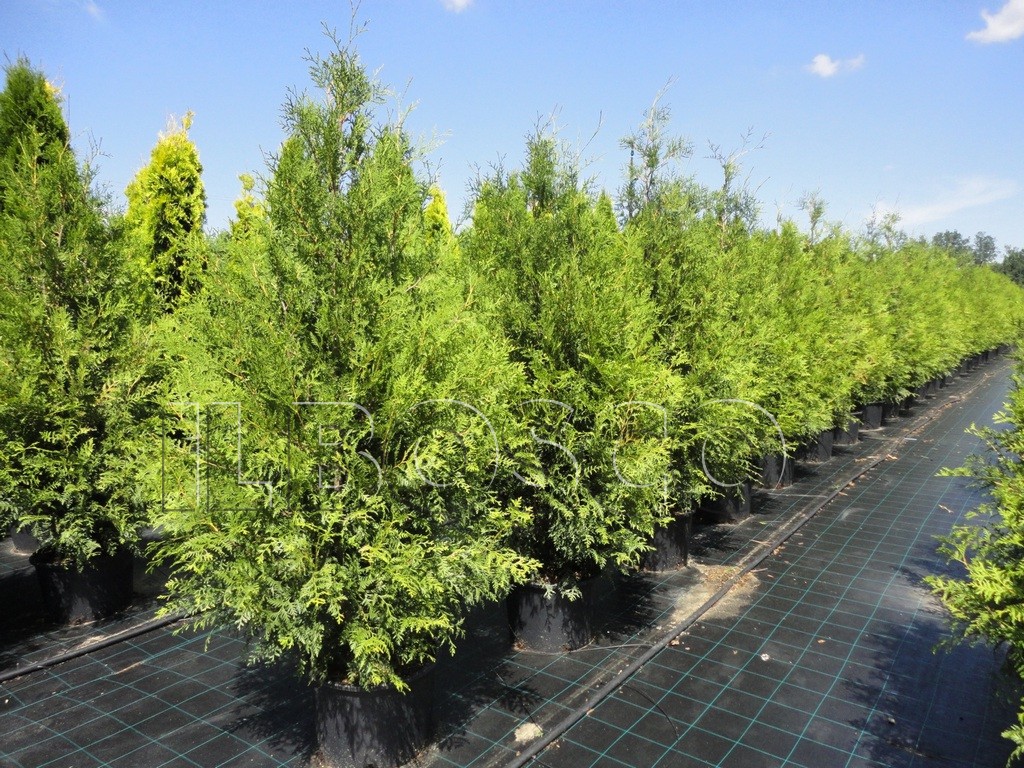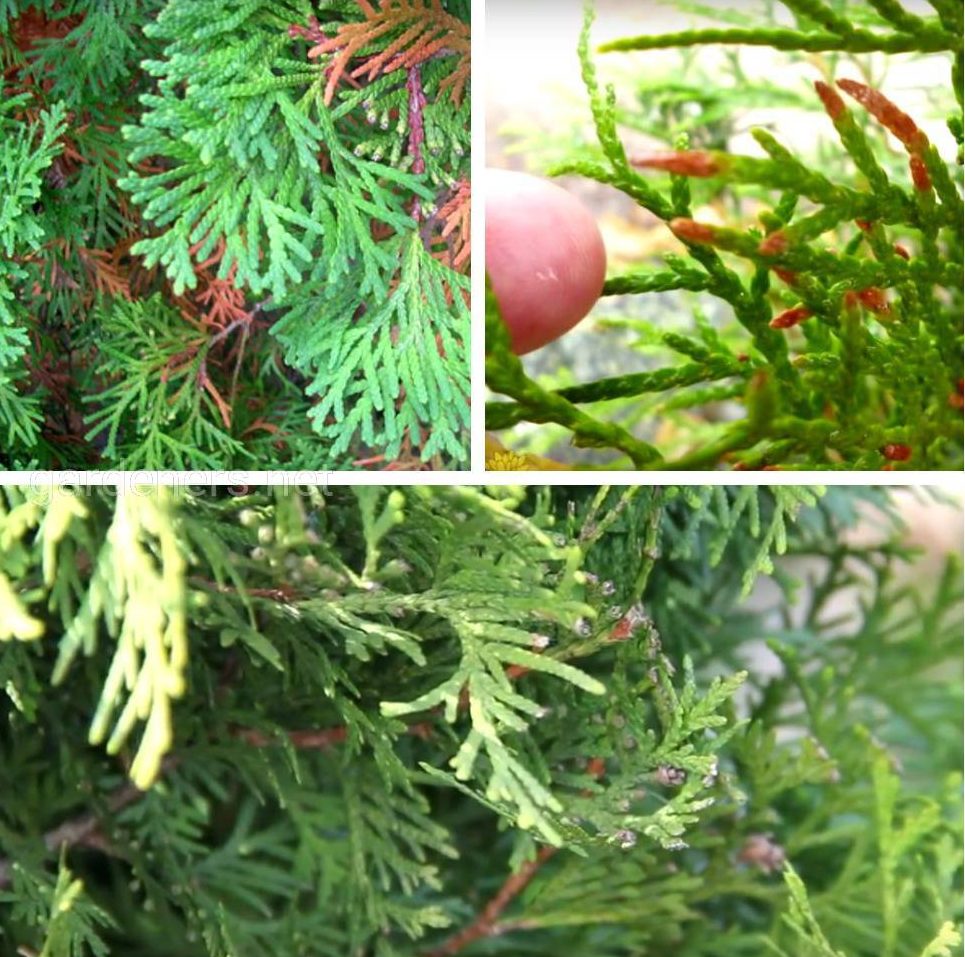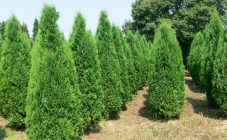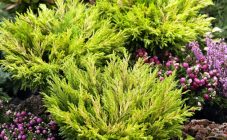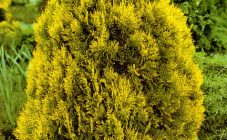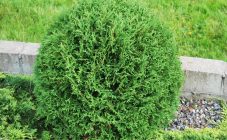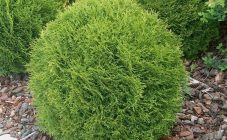Content:
Currently, over 120 natural and artificially bred varieties and species of thuja are known. The most popular type of western thuja is considered. While most varieties change color from dark green to yellowish in winter, there is a variety that does not change color. Such a thuja is called - Brabant. Thuja Smaragd and Brabant, whose differences are manifested in different growth rates and preservation / change in the color of needles, are the most popular types of western thuja.
Description of the variety
Thuja western Brabant has a high growth rate. The height of an adult plant can reach 20 meters with a crown that is 4 meters in diameter. However, despite its impressive size, thujas growing in central Russia rarely exceed 4-5 meters in height. On average, the growth is 35-40 cm per year in height and up to 15 cm in diameter.
Thuja Brabant can compete in terms of growth rate only with larch. But, unlike larch, which sheds foliage for the winter, thuja retains its decorative appearance all year round.
In addition to the typical green color, there is a variety with a rich yellow-green needles color. Such a variety is called - thuja Golden Brabant. The cone-shaped crown retains its color in winter, effectively standing out against the background of snow. Due to its appearance, it is well suited for creating hedges.
Originally, the western thuja species was found in the wild in Canada. Then it spread throughout Europe, attracting the attention of breeders. Thuja Brabant was bred in the medieval duchy of Brunt of the same name, which became a province of the Netherlands and gave the name to the variety.
According to the description, thuja Brabant has a columnar, branched crown, dropping to the ground. Moreover, the size of the crown is quite compact. The height of the tree when grown on the site varies within 3.5-4 meters. It grows well practically throughout the entire territory of the Russian Federation, with the exception of arid regions and areas with extremely low air temperatures (below 30-35 ° C).
Temperature drops negatively affect the state of thuja. Being a moisture-loving plant, it requires abundant watering. The high growth rate is an incomparable advantage over other types of tui. However, such an abundant growth of the crown imposes the need for regular molding.
The flowering of thuja western Brabant in spring ends with the setting of small-sized brown cones. The formation of cones slightly reduces the decorative properties of the tree.
Planting culture
Thuja can be planted in several ways: with petioles, seedlings and seeds. These methods can be compared in terms of the rate of obtaining an adult plant. Loses in the long term seed reproduction, being a longer process.
To plant seedlings, you must:
- dig a hole that exceeds the size of the root system by 20-30 cm;
- form a drainage layer of pebbles or broken bricks, 20 cm thick;
- prepare a soil mixture of turf, leaves, sand and peat;
- plant a seedling without deepening the root collar.
The cuttings remaining after cutting the thuja Brabant can be planted. Healthy cuttings, 10-15 cm long, are suitable for this. For rooting, you need to lower them in a jar of water.After the formation of the first roots, you can transplant the thuja into a pot, and in the second year, plant it in open ground.
Reproduction of thuja by seeds is impractical due to the loss of decorative qualities by the daughter plant. However, it is the cheapest way. The advantage of this growing method is to obtain strong and healthy plants. To propagate thuja by seeds, you need:
- the collected cones are kept warm in the warehouse until they crack;
- select seeds and cover them with wet sand;
- after a few days, plant them in boxes with a soil mixture of turf, peat and sand in a ratio of 3: 1: 1;
- with the appearance of the first seedlings, you can begin to harden the plants, increasing the interval of their being outside.
Despite the good tolerance of shady areas, a sunny place should be chosen for planting. In shading, the development of the crown is suppressed, making the general appearance less decorative. The soil should be loose and light. For this, peat bogs, dry or clay sandy loam are suitable.
Thuja Brabant prefers slightly acidic soils, in this regard, it is necessary to maintain the pH balance at a level of 4.5-6 units. Having lowered the seedling into the hole, you need to establish the location of the root collar at soil level. Deepening or elevation of the root collar will provoke the plant to dry out and die. Having carefully tamped the soil around the seedling, it is required to water the near-stem circle abundantly.
When forming an alley from thuja, seedlings must be planted at a distance of 6-8 meters between rows and 3-4 - between neighboring plants. To create a hedge, the width between seedlings in a row must be reduced to 0.5-0.7 meters.
Care rules
After planting, it is necessary to observe the irrigation regime at the rate of one bucket per 1 tree 1-2 times a week, depending on environmental conditions. When planting in the summer, it is necessary to increase the number of waterings. Sprinkling the entire tree has a good effect at this time. Carrying out such procedures will play the role of stimulating the development of the crown of the tree.
Sprinkling or spraying procedures will allow the needles to acquire shine, enhancing the decorative function.
Thuja can be fed in springtime. The use of nitroammophoska, at the rate of 100 grams per adult plant, has a good effect on plant growth. Any commercial preparations (for example, Kemira Universal) are suitable as fertilizers according to the scheme of 50-60 grams per 1 sq. meter.
Thuja has a superficial root system, therefore, loosening to a depth of no more than 10 cm is allowed.
In the first 2 years after planting, the young plant, despite its good resistance to frost, must be covered for the winter in autumn. Spruce branches or craft paper can be used as a cover. With the onset of spring, diseased, withered or injured branches must be removed.
It is possible to form a crown only 2-3 years after planting. With a sharp pruner in early summer, after the formation of buds and branches, you can prune the shoots. Haircut is performed twice a season. The second pruning is done in August. Such a system will form a dense crown suitable for the formation of a hedge.
Diseases and pests
Despite the high resistance of thuja to common diseases, there is a danger of infection with infectious diseases and pest attacks.
The most famous tuyeva disease is late blight. The fungus, spreading along the root system, violates the integrity of the outer layer. The needles begin to wither, acquire a gray tint, and the lower part of the trunk softens.A brown coating forms under the bark, and the roots become brittle with a characteristic putrid odor. The spread of the fungus can cause stagnation of water in the soil. As a preventive measure, fungicides must be added to the water for irrigation. If the plant is infected, it should be completely destroyed by replacing the soil layer.
The formation of brown shoots in early spring occurs due to the spread of another fungal infection. Yellowish scales form on the branches. To prevent the onset of the disease, it is necessary to regularly feed the plant and sprinkle the roots with lime. From July to October, at intervals of 2 weeks, it is necessary to spray the thuja with a 2% Fundazole solution. When the first affected shoot appears, it is necessary to cut it off. Otherwise, the whole plant will become infected.
With the appearance of yellow spreading ulcers, the appearance of a false shield should be suspected. If the disease spreads throughout the trunk, the tree will die. To destroy the false shield, you can purchase ready-made products (Karbofos, Actellik) or use folk methods. As a preventive measure, you can wrap the trunk with straw. You can process the branches with a solution of soap (15 grams), warm water (1 liter) and alcohol (10 ml). Applying special glue to the surface of the shoots will prevent pests from appearing.
Use in landscape design
The main advantage of thuja Brabant is its rapid growth. This characteristic allows you to form various decorative shapes: from a ball to a cone or pyramid. To create geometric compositions, you should choose a flat surface for planting thuja. As a representative of conifers, thuja purifies the air, enriching it with oxygen.
Thuja planted in a row can be formed into a hedge. Planting at a distance of no more than 1 meter between plants, you can get a dense curtain that covers the area and serves as a good decoration. Combinations of different varieties of thuja with shrub forms and flowering plants can create unique compositions.
In conclusion, we can say that thuja Brabant is a favorite plant used in landscape design. Compared to other varieties, Brabant compares favorably with low requirements for keeping conditions. Abundant growth and decorative appearance will allow even beginners to create unique compositions in the garden.
